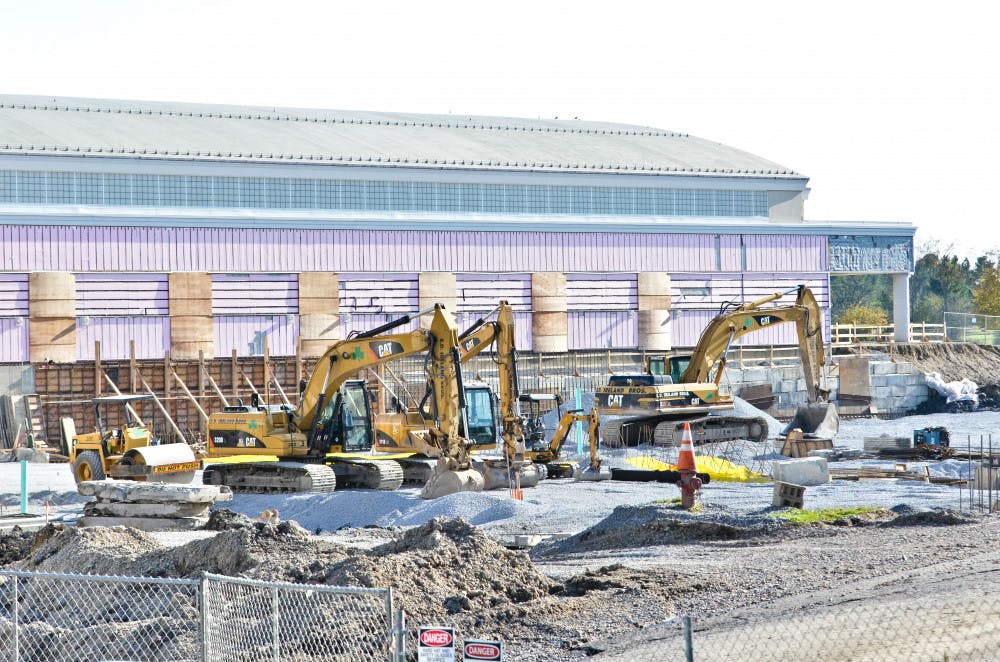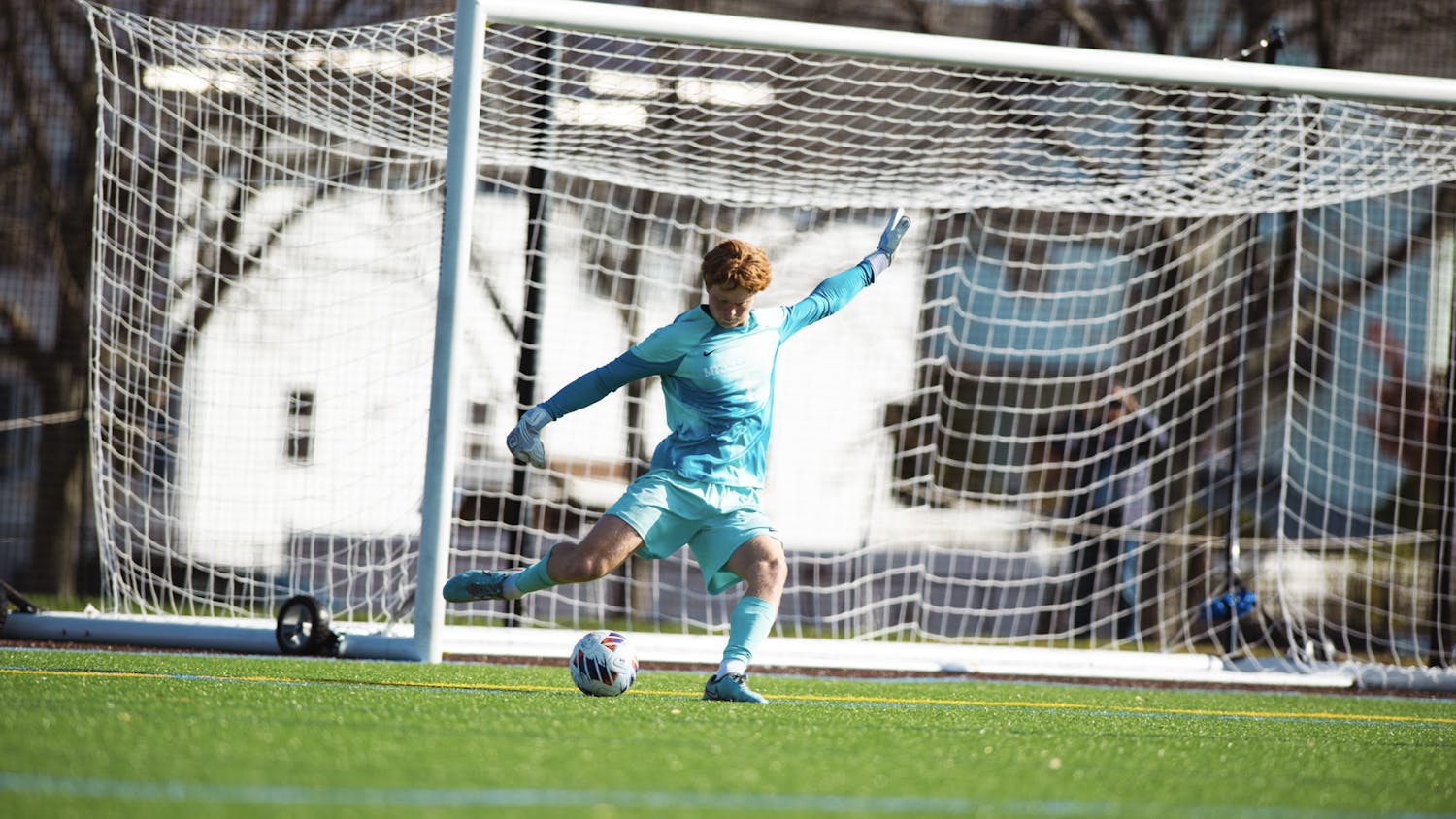As construction continues on the new squash center and field house set to transform Peterson Athletics complex into a top-level NESCAC facility, a large amount of emphasis on the sparkling new, $46 million project has been placed on energy efficiency and sustainability.
The nine-court squash center, opening next Saturday, Oct. 26 and the 110,000 square-foot field house boasting a 200 meter six-lane track and turf practice field, set for its unveiling in October 2014, both are on target for LEED gold-level certification from the U.S. Green Building Council – making them the only other buildings on campus besides Hillcrest environmental center to attempt the rigorous classification.
While certain trade-offs were made in the planning and development stages between low impact, locally sourced materials and ones that satisfied quality requirements to host athletic events, College project manager Mark Gleason said that every product was vetted for environmental sustainability, within reason.
“We look at a couple things: environmental impact and maintenance,” said Gleason. “We want to find materials that are low impact on the environment but that also don’t require a whole lot of maintenance.”
“Both of the projects are registered with LEED, and that guides a lot of the decisions in terms of materials,” he added. “We try to stay local within reason, but in general that’s what we’re trying to do: meet the 500-mile radius. For concrete and steel that’s easy to do. For siding, sometimes not as easy to do.”
The two spaces will feature numerous energy efficiency features, including natural light (or day lighting) through a skylight and windows in the squash center, two “clear stories” and glazing on the entire western concourse of the new field house. The new buildings will provide enough light during the day making electric lighting unnecessary.
Other materials, from an eventual green roof on the squash center to insulation and high-efficiency LED lights in both buildings point to a decision-making process focused on low impact materials.
One caveat, Gleason said, was that the Athletics department demanded the use of ASB squash courts – a product only manufactured in Germany.
“The squash courts come from Germany and there’s no way around that,” he said. “Given that, we have to find other things that are sourced closer to Middlebury.”
“Your squash court options are very limited,” Quinn said. “That’s not a real challenging decision — it’s not a huge list and you feel like you’re making a huge sacrifice.”

Gleason also pointed out the largest achievement in terms of energy efficiency for the project: taking down the Bubble – an inefficient heat and resource drain, not to mention an aesthetic eyesore. The new field house set to replace it, according to Gleason, will use half the energy of the Bubble despite being twice the space.
The footprint of the new facility was also intended to save green space at the College, something Gleason said was a priority for the committee who ultimately made the site decision.
“The College’s master plan showed that anyways, but it was good practice to look at its impact in a different location, from aesthetics to an environmental standpoint,” he said. “Putting it where it is now, from an environmental standpoint, is probably best because that area was not a green area before.”
Another, perhaps unintended, consequence of the new projects will be the removal of student parking from the Kenyon area. The spaces will become Faculty/Staff or event spaces. This will divert athletes who used to park in the lot to use other means of transport or become creative with their parking decisions.
“Right now there is no assigned parking in that lot – there wont be any student assigned parking out there,” said Gleason. “A lot of athletes used to drive to practices, but I think we are trying to discourage that now as part of the ‘Greening Athletics.’ Now people park in the tailgate area behind the stadium, but I think that’s still a long walk to the building.”
“There wasn’t an intentional decision to limit parking, but I have been trying for several years now, along with others to change the culture with driving down here,” Quinn said. “It’s not congruous with what you’re coming down here to do, whether you’re a varsity athlete, faculty, staff or student. I would like most of our parking to be event and visitor parking, just culturally.”
Gleason said that he is happy with how the project turned out, but also pointed to the fact that the LEED certification is not the “be all end all” for sustainability.
“It’s hard to say when you’re talking about your buildings to other schools and athletes that have interests in green buildings,” Gleason said. “It’s hard to say that your building is ‘green.’ You can say that, but prove it. Prove the building is LEED certified – only a third-party can certify that. We will be able to say we have a LEED gold squash center for what it’s worth. Some people will completely discount it but others think it’s really important.”
The new squash facility has a soft opening early next week and a firm opening scheduled for Oct. 26. Shortly after the firm opening, the courts and an adjacent spinning room should be available for student, faculty and staff use.
Additional reporting by DAMON HATHEWAY '13.5




